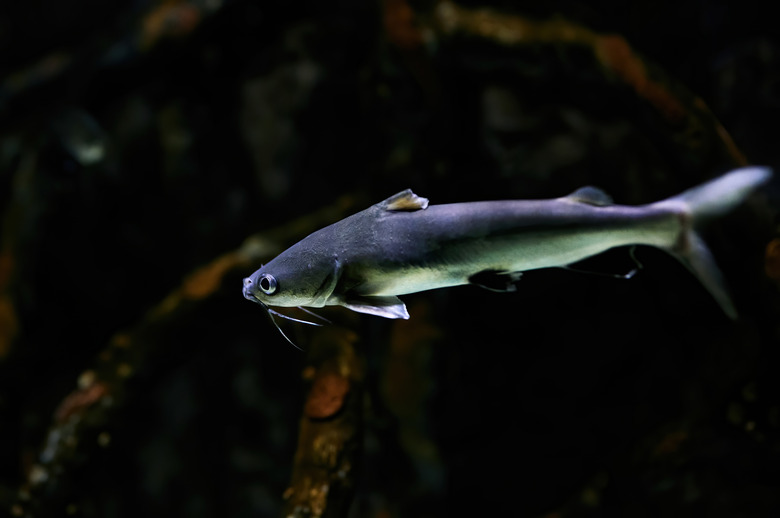How To Tell The Difference Between Male & Female Catfish
You might not think of your aquarium catfish as much more than creatures who spend their day lying around on the bottom of your tank, but if you've ever flipped on the lights in your aquarium at night, you're no doubt fascinated by the energetic after-dark activity of this type of fish, which can include some pretty strange mating behavior. A female catfish is called a fish, as is the male, because there are no other names for the female or male of this species. Learn which is a female catfish and which is male through mating behavior and physical clues unique to each catfish species.
Discerning male and female plecos
Plecos are one of the most popular aquarium catfish, commonly growing to lengths of 12 to 16 inches in a fish tank. It's important to know the gender of your plecos because males kept together in the same tank will be aggressive toward one another.
Bristlenose plecos are easy to identify, as their mouth has characteristic whiskers. The female catfish has shorter and fewer bristles, usually limited to areas around her mouth. The male pleco could have bristles that cover much of his face and can even have some on his pectoral fins. In some types of plecos, the female has no bristles.
You might not ever witness the actual act of egg-laying and fertilization with plecos. Prior to spawning, both the male and female will start to hang around the entrance to a cave. After they spawn, the male remains in the cave to guard, fan, and clean the eggs until they hatch within a few days. Limit the male to having one to three female companions to prevent exhaustion and boost his energy level with high-protein food during spawning season.
Corydoras catfish colonies
Corydoras catfish, or cories, can swim in schools of thousands of individuals in the wild, so it's important to give them at least a half-dozen companions in your fish tank. During breeding time, the entire school breaks into excitement, chasing each other around the tank. Males initiate by chasing the females and when ready, the females turn around and chase the males.
A female will lay a clutch of eggs that she holds between her pectoral fins. To fertilize them, the male assumes a "T" position. Once fertilized, the female will deposit the eggs on a leaf or other smooth surface in the tank. She'll repeat the process until 200 to 300 eggs are deposited. Cories and other fish in the aquarium will eat the eggs, so gently remove the eggs to another aquarium or use a breeder tank if you want them to hatch.
Cories are fairly easy to sex. Males are elongated and narrow, while females have a rounded shape in the abdomen so they can carry eggs. A female about to spawn will become very round and will have a reddish tinge to the area around her vent where the eggs will emerge.
Otocinclus catfish gender
The Otocinclus catfish is a popular variety due to the voracious appetite for algae. Like the cories, the Otocinclus is a schooling fish, and the two species get along very well in a tank setting. Their small size and daytime activity add to their desirability for an aquarium setup.
As juveniles, males and females look alike. When they reach sexual maturity, female Otocinclus grow larger and wider than their male counterparts. At spawning time when she is filled with eggs, a female Otocinclus is shaped like a tadpole.
It's easy to recognize the smaller, slimmer males. They're the ones competing with one another to be closest to the large female. They push rivals off to the side and chase the female around the tank when conditions are right for spawning.
References
- Tropical Fish Hobbyist Magazine: Aquarium Science Male or Female? Gender Determination in Fish
- Aquarium Genius: How to Breed Bristlenose Plecos in Your Own Aquarium
- Fish Tank Advisor: Otocinclus: The Good, The Bad and Algae
- Build Your Aquarium: Otocinclus Catfish Care Sheet: Your Complete Species Guide
